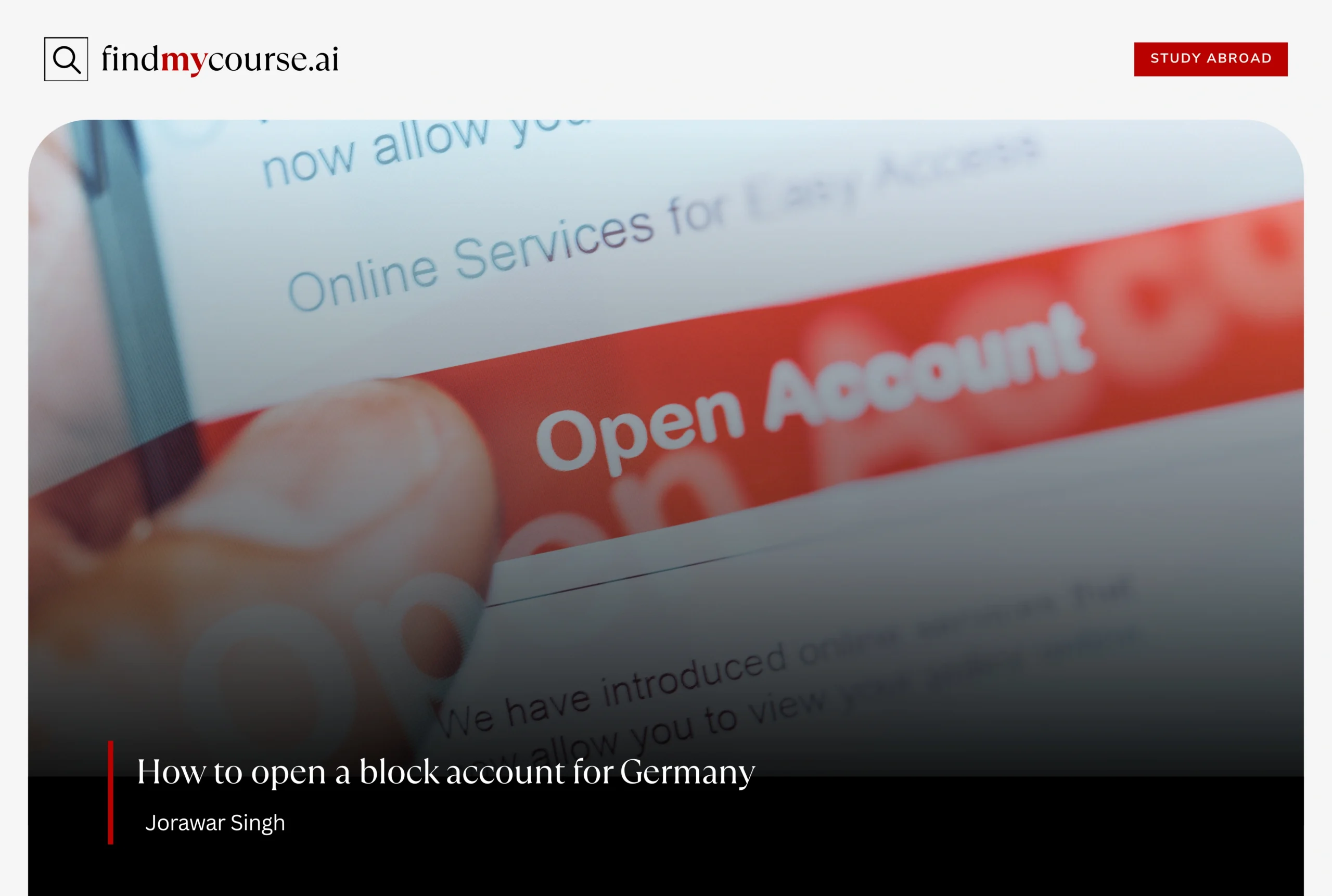Planning to study, work, or move to Germany as a non-EU citizen? You’ve probably come across something called a blocked account (Sperrkonto). It might sound a bit intimidating at first, but don’t worry—we’re here to break it all down for you. So, in this guide, we’ll explain what a blocked account is, why you need one, and walk you through the entire process of opening one with ease. Whether you’re heading to Germany for university, job hunting, or taking a language course, this guide has you covered.
What Is a Blocked Account (Sperrkonto), and Why Is It Important?
A blocked account is a special type of bank account required by German immigration authorities. It’s mainly used by international students and visa applicants to prove they can support themselves financially while living in Germany. The “blocked” part means that you can only withdraw a fixed monthly amount, helping ensure you have enough money for your stay.
As of 2025, students must deposit €11,904 per year (around €992 per month) to meet visa requirements. Therefore, always double-check with your local German embassy or consulate, as the required amount can change.
Who needs a blocked account?
- Students: To show you can cover your living expenses while studying.
- Job-seekers: To prove you can support yourself during your job search.
- Language course attendees: Especially those attending intensive German language programs.
Why Does Germany Require a Blocked Account?
The German government wants to make sure visa holders won’t need to rely on public funds. Moreover, by opening a blocked account, you show that you can cover everyday expenses like:
- Rent and accommodation
- Food and groceries
- Health insurance
- Transportation
- Personal expenses
Without proof of funds—like a blocked account, a scholarship, or a sponsor—your visa application could be denied. Thus, it’s that important.
How to Open a Blocked Account for Germany: Step-by-Step
Setting up a blocked account isn’t complicated when you know the steps. Here’s how to get started:
Step 1: Choose the Right Blocked Account Provider
Pick a provider that matches your needs. Here are some popular and reliable options:
- Fintiba – Digital setup, fast processing, works with Sutor Bank in Germany.
Setup Fee: ~€89 | Monthly Fee: ~€4.90
Fintiba Blocked Account - Expatrio – Combines blocked accounts, health insurance, and a free current account.
Setup Fee: ~€69 | Monthly Fee: ~€5
Expatrio Blocked Account - Coracle – Easy-to-use, competitive pricing, no monthly fee in some cases.
Setup Fee: ~€99 | Monthly Fee: Often free
Coracle Blocked Account - ICICI Bank (for Indian nationals) – Offers blocked accounts and Visa debit cards.
Note: Temporarily suspended new applications as of July 2024.
ICICI Blocked Account - Kotak Mahindra Bank – Also for Indian students; confirm embassy acceptance.
Kotak German Blocked Account
⚠️ Important:
Avoid unknown providers like Drop Money or BAM, which have faced trust issues. So, always go with a provider that has an EU or German banking license for deposit protection (up to €100,000).
Compare providers based on:
- Setup and monthly fees
- Online convenience
- Speed of account opening
- Customer support in your language
- Acceptance by the German embassy
Step 2: Collect the Required Documents
Most blocked account providers will ask for:
- Passport scan (photo page)
- Visa application proof (appointment confirmation or application receipt)
- Proof of address (utility bill or official letter)
- University admission letter (for students)
- Filled-out application form (from the provider’s website)
Additionally, some may request additional info—always check their site for the full list.
Step 3: Apply Online or In-Person
Providers like Fintiba, Expatrio, and Coracle allow you to apply completely online:
- Go to their site and create an account.
- Fill out your personal details.
- Upload the required documents.
- Submit and wait for approval.
If you’re using a local bank like Sparkasse, the process might need to happen in person—usually after you arrive in Germany.
Step 4: Deposit the Required Funds
Once approved, the provider will give you payment instructions. You’ll need to transfer the required amount (e.g., €11,904) from your home country.
Tips:
- Double-check all bank details.
- Include the correct reference number.
- Watch out for exchange rate fluctuations and transfer fees.
- International transfers may take up to 10 business days.
Step 5: Get Confirmation of Your Blocked Account
After the deposit, you’ll receive a confirmation letter from your provider. This is a key document for your visa application, so keep it safe.
Step 6: Submit Your Visa Application
Submit your visa application along with your blocked account confirmation and other required documents like:
- Health insurance proof
- Passport photos
- University admission letter
Step 7: Access Your Funds in Germany
Once you’re in Germany, activate the account (usually online or at a bank branch). You’ll then be able to withdraw your monthly allowance—typically €992. The rest stays locked until your visa period ends or the account is closed.
Pro Tips for a Smooth Blocked Account Experience
- Start early: Begin at least 2–3 months before your visa appointment.
- Confirm embassy requirements: Especially if using a provider outside the EU.
- Plan for fees: Include setup costs and transfer charges in your budget.
- Read reviews: Check Trustpilot or Google for honest feedback on providers.
- Bundle services: Many providers offer health insurance too— check their packages.
- Save all records: Keep receipts, emails, and documents for your visa file.
Common Problems (and How to Avoid Them)
- Delays in approval: Make sure your documents are complete and error-free.
- Bank transfer issues: Use the exact reference number and check intermediary bank policies.
- Currency differences: Transfer a little extra to be safe.
- Visa rejection: A blocked account alone isn’t enough. So, make sure all requirements are met.
Frequently Asked Questions
1. How much money do I need?
For a student visa in 2025: €11,904/year (or €992/month).
2. Can I take out all the money at once?
No, you’ll only be able to withdraw the monthly allowance.
3. Can I apply from outside Germany?
Yes! Most providers offer a fully online application process.
4. What if my visa gets rejected?
You can close the account and get your money back, minus fees.
5. How long does the whole process take?
Usually around 1–3 weeks, depending on your provider and bank transfer times.
Final Thoughts
Opening a blocked account for Germany might seem like a lot, but with the right guidance and a reliable provider like Fintiba, Expatrio, or Coracle, it’s a smooth process. Furthermore, this account isn’t just a visa requirement—it’s your financial foundation for living in Germany confidently and securely.
Therefore, plan ahead, stay organized, and you’ll be ready to start your German adventure in no time!
🌍✈️ Viel Erfolg und gute Reise! (Good luck and safe travels!)
– Jorawar Singh



4 thoughts on “How to Open a Blocked Account for Germany”
Comments are closed.